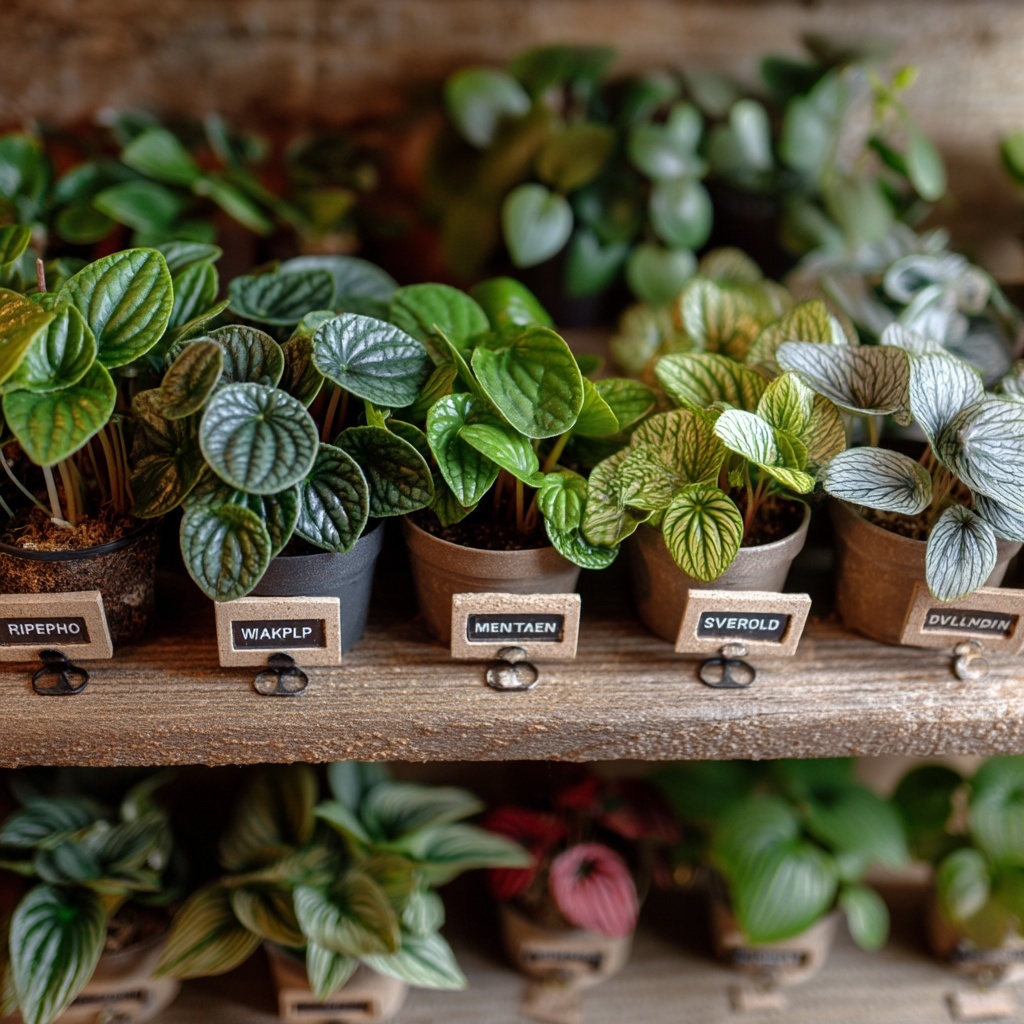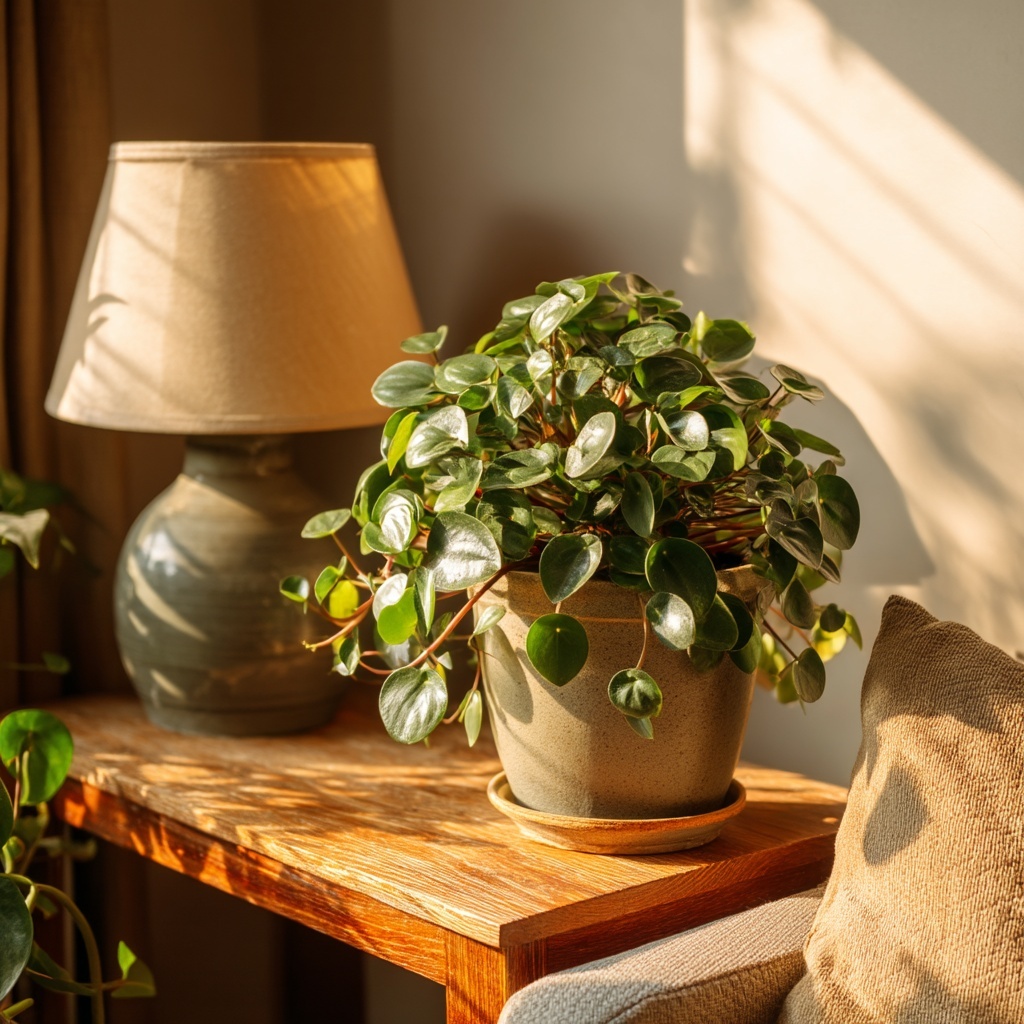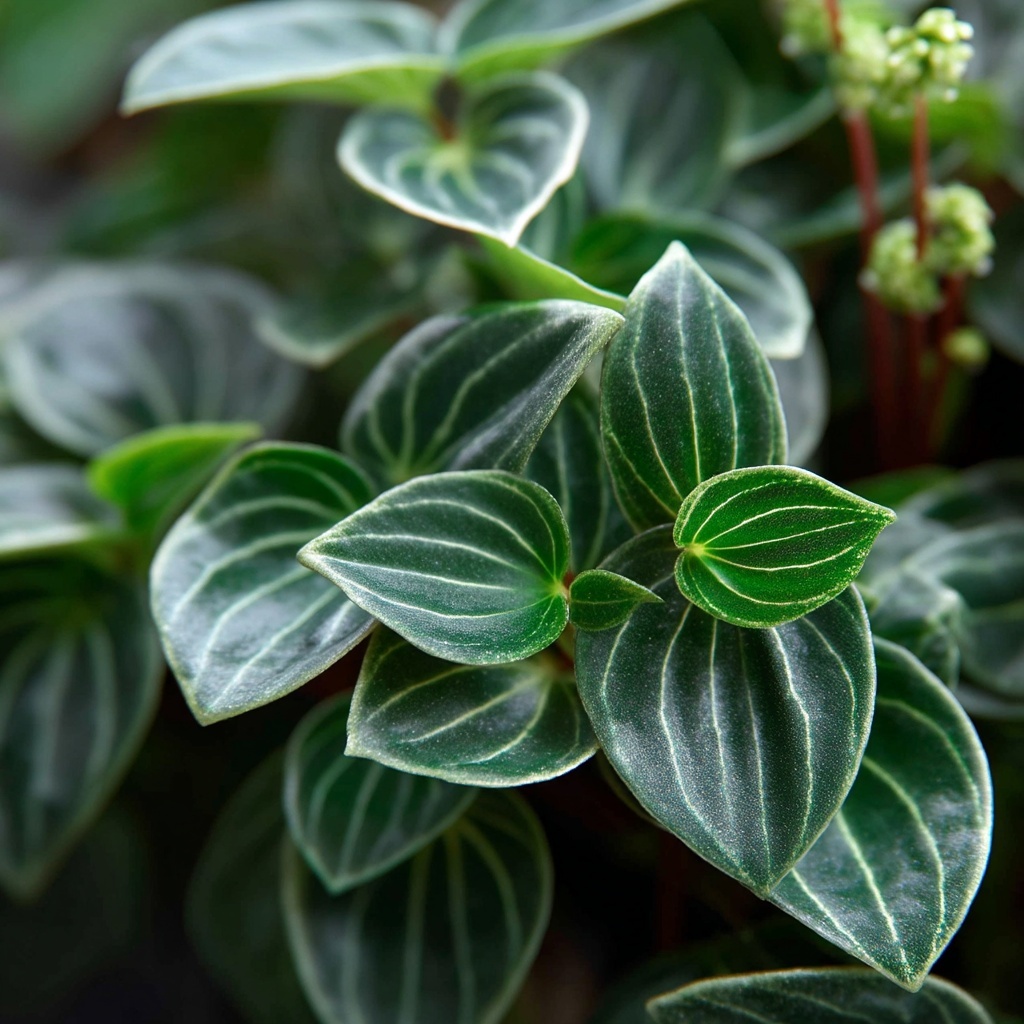Plant lovers searching for a compact, low-maintenance houseplant with stunning foliage will find plenty to admire in the peperomia. Native to tropical regions across Central and South America, this versatile plant species thrives indoors with minimal effort—making it a favorite among both beginner and seasoned indoor gardeners. With over a thousand known varieties, peperomia offers a surprising diversity in leaf shapes, colors, and textures, ranging from deep emerald ripples to variegated cream-and-green patterns. Whether you’re looking to brighten a windowsill or add greenery to a small apartment, this resilient plant makes an ideal companion.
Table of Contents
Table of Contents
Peperomia Plant Features: Foliage and Flowers
What makes the peperomia such a standout plant is its remarkable variety of foliage. These plants typically have thick, fleshy leaves that store moisture—an adaptation from their tropical origins. Depending on the species, the leaves can be tiny and round or broad and heart-shaped, ranging in size from a dime to nearly the size of a baseball. Many feature rich green hues, but others are beautifully variegated with silver, cream, or even pink tones.
Ripple peperomias, for example, showcase textured, ruffled leaves that feel as unique as they look. While peperomia plants are grown primarily for their foliage, they may occasionally produce flowers. However, the blooms are subtle and stick-like, often green or brown, and lack the visual appeal of the leaves. Most gardeners choose to pinch them off, allowing the plant to focus its energy on growing vibrant foliage instead.
Where to Plant Peperomia Indoors

Peperomia is a flexible houseplant that adjusts well to a variety of indoor environments. Whether you’re styling a sunny windowsill or need greenery for a dim hallway, this plant can thrive with the right placement. For best results, position your peperomia in bright, indirect light—such as near an east- or west-facing window. Direct sun can scorch its leaves, while too little light may cause legginess.
Thanks to its tropical roots, this plant also appreciates moderate humidity. Kitchens and bathrooms are ideal spots, especially if they receive soft natural light. While peperomia can handle lower humidity, placing it near a humidifier or grouping it with other plants will help mimic its native environment and encourage lush growth.
Peperomia Plant Care Tips

Caring for a peperomia is refreshingly simple, making it a top choice for anyone looking to add a low-maintenance plant to their indoor collection. With a few basic care guidelines, your peperomia will remain healthy and vibrant year-round.
Light Requirements
Most peperomia plants thrive in medium to bright, indirect light. Avoid harsh direct sunlight, which can scorch the foliage. Varieties with thicker or darker leaves may tolerate slightly lower light, but they should still receive several hours of filtered light each day. Rotate the plant regularly to ensure even growth.
Soil and Watering
Use a well-draining potting mix—ideally one formulated for succulents or indoor plants. Peperomia is sensitive to overwatering, so allow the top inch of soil to dry before watering again. Water less frequently in winter, when the plant is not actively growing.
Temperature and Humidity
Peperomia prefers indoor temperatures between 60°F and 80°F. It adapts well to average home humidity, but it will appreciate a little extra moisture in the air. Grouping plants together or placing a pebble tray with water beneath the pot can help boost humidity levels.
Fertilizing
Feed your plant with a balanced, water-soluble houseplant fertilizer every 3–4 weeks during spring and summer. In fall and winter, cut back to once a month or stop altogether, depending on your indoor conditions.
Pruning and Shaping
To keep your peperomia looking full and compact, trim back any leggy stems. The cuttings can be used for propagation, giving you more plants to enjoy or share.
Potting and Repotting
These plants have small root systems and grow well in compact containers. Only repot when root-bound, and avoid oversized pots to reduce the risk of root rot.
How to Propagate Peperomia Plants

Propagating a peperomia is an easy and rewarding way to multiply your favorite plant without much effort. Whether you’re using stem or leaf cuttings, these plants root quickly and adapt well to home propagation methods.
Stem Cutting Propagation
For most upright-growing peperomia varieties, stem cuttings are the simplest method. Use clean scissors or pruning shears to snip a healthy stem just below a node. Remove the lower leaves, leaving one or two at the top. Insert the cutting into moist, well-draining potting mix, and place it in a warm area with indirect light. Within a few weeks, roots should form, and your new plant will begin to grow.
Leaf Cutting Method
For stemless varieties like ripple peperomia, propagation through leaf cuttings works best. Snip a healthy leaf with a small piece of stem attached. Insert it into the soil or lay it flat on top with the cut edge slightly buried. Keep the soil lightly moist, and new roots and shoots will form from the leaf base.
Water Propagation Option
Many peperomia plants also root well in water. Place your cuttings in a small glass with the node submerged and leaves above water. Change the water weekly, and once roots develop, transfer the cutting into soil.
Whichever method you choose, propagation is a simple way to expand your plant collection or share your peperomia with friends.
Popular Types of Peperomia Plants

With more than 1,000 species in the genus, there’s a peperomia plant to suit nearly every style and space. While not all are commonly available, several cultivated varieties have become favorites among indoor gardeners for their unique leaf patterns, shapes, and compact growth.
Ripple Peperomia (Peperomia caperata)
This variety features deeply textured, puckered leaves in shades ranging from deep green to reddish-purple. Cultivars like ‘Emerald Ripple,’ ‘Red Luna,’ and ‘Metallica’ bring dramatic flair to small containers.
Watermelon Peperomia (Peperomia argyreia)
Named for its silver-striped, round leaves that resemble a watermelon rind, this compact plant grows 6 to 8 inches tall and prefers bright, indirect light.
Teardrop Peperomia (Peperomia orba)
This dwarf variety stays under 6 inches tall, with rounded, teardrop-shaped leaves. It’s ideal for small desks, shelves, or terrariums.
Red-Edge Peperomia (Peperomia clusiifolia ‘Rainbow’)
Known for its cream, green, and gray-green leaves edged in red, this eye-catching plant adds colorful contrast to indoor displays.
Variegated Baby Rubber Plant (Peperomia obtusifolia ‘Variegata’)
This upright-growing peperomia has large, waxy leaves splashed with green and gold. It’s one of the most forgiving varieties, making it perfect for beginners.
Silverleaf Peperomia (Peperomia griseoargentea)
Sporting metallic, rippled foliage with dark green veins, this plant adds a silvery shimmer to any houseplant collection.
Peperomia ‘Jayde’ (Peperomia polybotrya)
This variety features glossy, teardrop-shaped leaves and grows up to 18 inches tall, making it one of the taller peperomias.
Japanese Peperomia (Peperomia japonica)
With small, rippled leaves and pink-red stems, this compact plant offers a playful twist on traditional greenery.
Each of these types brings its own charm and character, giving indoor gardeners a wide selection of textures and colors to enjoy.
Conclusion

If you’re searching for a beautiful, low-fuss plant to enhance your indoor space, peperomia is a smart and stylish choice. With its diverse foliage, minimal care needs, and compact size, this houseplant suits every lifestyle—from apartment dwellers to plant enthusiasts with growing collections. Whether you’re drawn to the ruffled textures of ripple varieties or the glossy sheen of watermelon peperomia, there’s a perfect plant waiting to brighten your home. Follow the simple care and propagation tips above, and you’ll enjoy a thriving peperomia for years to come.


